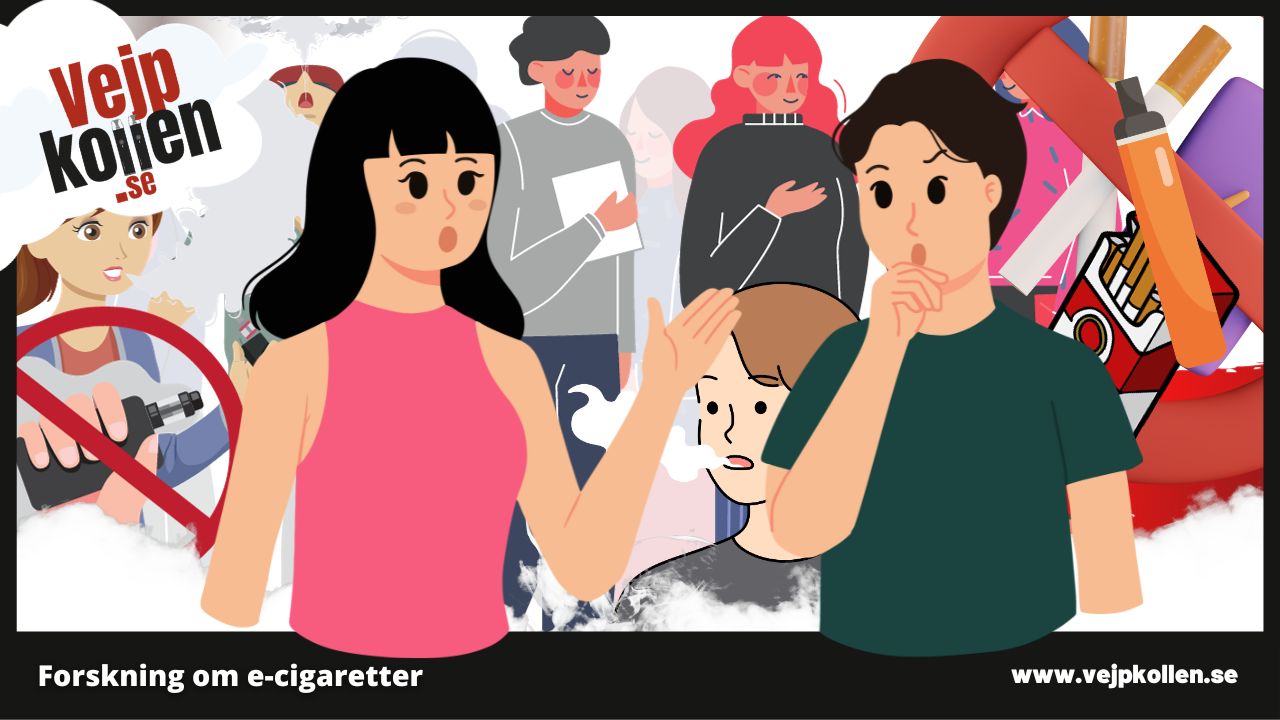Trendy and cool. But isn't it just as dangerous as smoking? Young people who vejpake and smoke regularly have many conflicting opinions about e-cigarettes, smoking and their own nicotine use.
"Young people are in a media frenzy and are naturally influenced by a discussion about vejping that is mostly based on exaggerated risks or horror stories. At the same time, they receive very little information about the much more dangerous smoking," said Caitlyn Notley, Professor of Addiction Science, who presented new research at the E-cigarette Summit UK 2023.
"Doing qualitative interviews and listening to what young people really say about vejping and e-cigarettes is very important to understand how to best deal with it"
So says Caitlyn Notley, Professor of Addiction Science at the University of East Anglia.
In light of the fact that many more young people are using e-cigarettes on a daily basis, she brings young people together to find out how the conversation is going. The aim is to get a picture of how today's young people relate to everything from flavours, risks of harm, stories in the media and how they would react to different bans.
Smoking decreases - but vejp smoking increases more
Teenage smoking has increased dramatically in recent years. This is true not only in Sweden and the rest of the EU, but also in England. Sporadic use (in the last 30 days) has gone from 10 per cent in 2021 to 20 per cent in 2022. However, Caitlyn Notley focuses mainly on more regular, daily use. Here the statistics show an increase from 3 to 7 per cent over the same period. The figures relate to children and young people aged 11-17.
"By all means, smoking has continued to decline steadily over the same period for the group and is now close to 3 per cent. But smoking has not decreased at the same rate as e-cigarette use has increased." notes Caitlyn Notley as she presents her latest research at the E-cigarette Summit UK 2023.
Disposable vejps in the spotlight
The large increase can be linked to a specific type of e-cigarette, single-use models, while the use of other types of e-cigarettes has decreased significantly. Today, disposable e-cigarettes account for almost 70 per cent of the products circulating among young people.
"It is very clear that this mill is linked to a particular product category in the market," says Caitlyn Notley.
Interviews with young people
But what do young people really think about their own use? Caitlyn Notley specialises in qualitative studies and has spent the last 10 years focusing on users' own stories about e-cigarettes and vejping. Her research team gathered around 30 young people, aged 16 to 20, gave them discussion questions and let them talk in groups. The conversations were recorded without the presence of a researcher. The aim was to make the discussion as natural as possible.
"Over half of the participants come from socially disadvantaged groups, and a third said they have some form of support at school. 70 per cent vejped daily, but interestingly, almost half of the people in the group smoked alongside their vejping" explains Caitlyn Notley.
Most smoked first
The researchers also found that the vast majority of people started smoking before they started vejpa.
"The average age to start smoking was 14, while it was 15 for those who started with e-cigarettes first. A common story was that they usually met their friends and smoked together, but someone had brought an e-cig and they tried it too." says Caitlyn Notley.
Interchangeable behaviours
According to Caitlyn Notley, there are clear signs of 'interchangeable behaviours' among young people. They use e-cigs and cigarettes in the same way, in the same context and for the same reasons.
'Fitting in and socialising with friends were common explanations. But many also told us that they vejped to deal with emotions such as stress, anxiety, sadness. At the same time, it was about enjoyment, including taste experiences, and playing with the vapour," says Caitlyn Notley.
Young people told us that vejping is a habit driven by availability. Something you do if and when the opportunity arises.
"Someone said it's like having a mobile phone in your pocket. You pick it up all the time, but only if it's there. If you don't have a vejp in your pocket, you don't think much about it either," says Caitlyn Notley.
Thinks e-cigs are worse than cigarettes
Caitlyn Notley says that the use of e-cigarettes by young people is not really that remarkable. "They are trendy products that are seen as a bit 'cool', just like smoking." What drew her attention was young people's perception of the relative risks of smoking and vaping and the ease with which they switch between the two.
"A majority of the interviewees felt that vejpa is as dangerous as smoking. That you "know what's in cigarettes", that you get cancer from smoking, but that it "can be cured, sort of". However, an equally common opinion about e-cigs was that there are "dangerous chemicals" in a vejp that can lead to "popcorn lung and corrosion". And that it is even worse than smoking" says Caitlyn Notley.
Gross exaggerations in the media affect
Caitlyn Notley argues that these very ideas about e-cigarettes can be linked to a number of high-profile media articles. Many have been gross exaggerations - popcorn lung, for example, has long been dismissed as something that can be linked to vejpning - or headlines that rarely reflect what any research can actually show.
"It is both worrying and sad that misleading information so easily affects young people. But it is clear that this is part of their world." says Caitlyn Notley.
"Nobody talks about smoking anymore"
At the same time, a large proportion of young people stated that they very rarely read or heard anything about the risks of smoking anymore. However, vaping was always in the news.
"One of the participants said this: Nobody talks about the danger of smoking anymore. Most people know that smoking is dangerous, but we are constantly told that it is a total disaster if we vejp. And that it's just as bad as smoking really."
Perceive smoking as cheaper
Caitlyn Notley also notes that young people's perceptions of risk influence other factors. Price was an important part of the choice between vejpa and smoking.
"A majority of those who both smoked and vejped talked about the costs. A common argument was that it is actually cheaper to smoke than to buy e-cigs." A single e-cig lasts a day, while a few packs of cigarettes can last a month," said one participant."
Buying illegal products easily
The young people also revealed that they were happy to buy e-cigs that are not actually legal to sell. These are products with a significantly higher liquid capacity than the two millilitres allowed in both the UK and the EU. Again, the young people were thinking economically.
"Someone explained it like this: "If I buy a vejp with 600 puffs for £6, it lasts half a day. But if I buy one with 9,000 puffs for £15, it will last me two weeks." It was clear that there was no problem getting this type of e-cigarette," says Caitlyn Notley.
Bans matter less
Currently, some countries want to ban the sale of single-use models. British politicians have also opened up this possibility. The young people in the study were therefore asked what they would do if so-called 'disposables' were banned. "The answers were very clear," says Caitlyn Notley.
"They would do what they do today: get them illegally. Some would switch to just smoking instead. Some would try a fillable system. It was clear that many people felt that a ban would not affect them much," says Caitlyn Notley.
Young voices at the centre
Caitlyn Notley's study is funded by the National Institute for Health Research and is now going through the final stages before publication. She is asked whether it is really possible to draw any overall conclusions about what is behind the recent increase in young people taking vejpar by talking to just 30 people. Caitlyn Notley
'This type of qualitative study cannot in any way be considered to show causal relationships or draw overall conclusions about what influences young people who vejpar to do what they do. But we need different types of studies to see the relationships, both quantitative and qualitative. Qualitative studies on a topic can fill important knowledge gaps and provide explanations that would not have been possible otherwise. We need to put young people's voices at the centre of our discussions and thinking about this issue," says Caitlyn Notley.




